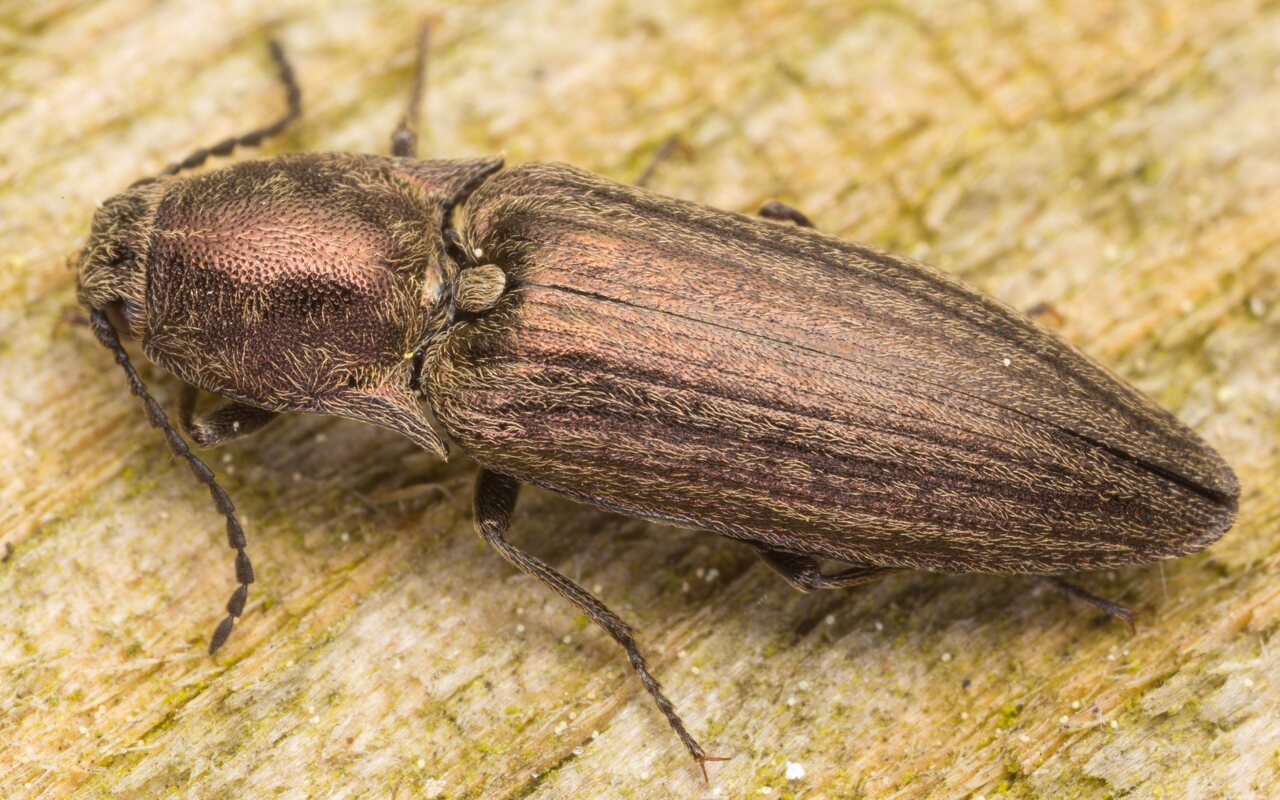
Actenicerus sjaelandicus · strazdanotasis spragšis
- Actenicerus siaelandicus
- marsh click beetle
- Feuchtwiesen-Schnellkäfer
- ruutuseppä
- strazdanotasis spragšis
- sammetsknäppare
This beetle is present in most of Europe and in the East Palearctic realm. Typical habitats are wetland margins, marshes, peat bogs and Carr but adults often occur in wet woodland and damp grassland that is prone to flooding and have been recorded from permanently damp arable margins. Adults overwinter in damp soil and are adapted to tolerate periods of water logging, they become active during the first warm days of March and persist into July or August, generally a month or so before the new-generation emerges. Reproduction occurs in the spring and females oviposit among roots in damp or even waterlogged soil or among soft decaying logs in similar situations. One of preferred host-plants are Carex species. Larvae feed on roots and may take several years to develop, moving deeper into the soil during the colder months, and like the adults they are also adapted to tolerate waterlogged soils and periods of flooding, especially during the winter and spring when flooding may be prolonged. Feeding resumes in the spring when they move up through the soil and continues through the summer and autumn, fully grown larvae pupate in the soil from August and new-generation adults appear during August and September.
10-16 mm. A large and very distinctive species, elongate-oval with long legs and serrate antennae, body black with a metallic bronzy or bluish lustre, antennae black, legs dark brown or black with red claws. The dorsal surface has dense pale pubescence which forms characteristic wavy patterns across the pronotum and along the basal half of the inner elytral striae and which, from certain angles, appears chequered on the elytral disc. Forebody moderately strongly and densely punctured. Head prognathous and rather flat above, with convex eyes that occupy most of the lateral margin, frontoclypeal suture weakly developed or absent, frontal ridge weak and evident only below the antennal insertions. Antennae serrate from the third or fourth segment, the third segment elongate and clearly longer than the second. Pronotum slightly elongate, broadest across produced hind angles and gradually narrowed to obtuse anterior angles, the fore-margin rounded and much narrower than the distance between the posterior angles, surface uneven but without a median impression, punctures stronger and denser towards the base, hind angles keeled above. The pronotal pubescence is distinctive; running longitudinally along much of the centre, almost transversely in the apical half and forming wavy patterns across the base. Scutellum quadrate and rounded, the surface obscured by dense pale pubescence. Elytra separately and quite strongly rounded across the base and sub-parallel in the basal half, striae impressed and punctured to just before the apex; the fourth more strongly impressed above the shoulders, interstices finely and moderately densely punctured throughout, more dense and finer than those on the pronotum. Legs long and slender; middle and hind tibiae with tiny apical spurs and all tibiae with rows of larger setae among the finer pubescence. All tarsi with five simple segments, claws smooth and with a small obtuse basal tooth.
‥
0 comments
Add a comment